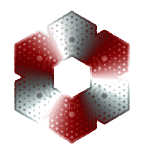|
Introduction
In the book, "
Experimentation in Mathematics," authors J.Borwein and D.Bailey write:
"One of the greatest ironies of the information technology revolution is
that while the computer was conceived and born in the field of pure mathematics,
through the genius of giants such as John von Neumann and Alan Turing, until
recently this marvelous technology had only a minor impact within the field
that gave it birth." Computers have been an essential tool of any researcher
working in fields raging from applied mathematics and physics to medicine
or biology. To the contrary, most mathematicians are still looking at
the computers as mere calculators or printing devices, not acknowledging
the fact that computer simulations and experiments could be a very useful
instrument in tackling mathematical problems. In fact, experiments have
always been an important tool in mathematical discovery. Carl Friedrich
Gauss once declared that his way of arriving at mathematical truth was
"through systematic experimentation." In recent years there was a definite
shift toward this direction. Computers as well as various mathematical
software packages have gained enough power to be able to perform sophisticated
computations right on the office desk. If properly utilized, they might
enable a completely new approach to discovery by running experiments and
analyzing the outcomes.
At this point we would like to mention a few examples where computer
computations were essential in obtaining mathematical results. One of
the most controversial proofs accepted to a major mathematical journal
in recent years was Hales'
computer-assisted proof of the Kepler's conjecture. The problem of
finding the densest packing of spheres was introduced by Kepler in 1611.
T.Hale was able to reduce the problem to one of global optimization. He
solved it by systematically applying linear programming methods to 5,000
different configurations of spheres which involved solving around 100,000
linear programming problems. The proof contains 250 pages and 3 gigabytes
of computer programs and results. After a year of work, a team of 12 referees
concluded that they are 99% sure that the proof is correct, but they cannot
verify the correctness of all computer computations. Another prominent
example is the solution of the Four
Colour Conjecture, where researches used more then 1,200 hours of
computer time to work through the details of the final proof. Computers
were used in solving a number of key equations over free groups during
the process of discovering a solution to the famous Tarski problem. A
computer program was responsible for discovering of a direct formula for
Pi, which allows the computation of individual hexadecimal or binary
digits of Pi. An interesting fact is that proving that the formula
is correct was almost a trivial matter after it had been obtained. Finally,
we would like to mention that intensive computations preceded the proof
of the famous Fermat's last theorem. With the help of computers Fermat's
last theorem was proved to be true for integers up to 4.000.000.
The process of using advanced computing technology in mathematical research
is often termed as Experimental Mathematics.
The power of the computer experiment approach lies in the belief that
it can lead a mathematician to discoveries and insights that might never
have been reached using traditional methods. We have to say here, that
in spite of growing interest and acceptance of the new technology among
working mathematicians, there is still no common methodology. Applications
are usually limited to exhaustive enumerations, visualizations or verifying
the correctness of suggested proofs.
One of our main objectives is to show that the techniques of exploratory
data analysis and statistical pattern recognition can be successfully
used in abstract algebra and the theory of infinite groups in particular.
The approach produces methods that are helpful in revealing hidden mathematical
structures and formulating rigorous mathematical hypotheses. Our philosophy
here that if an irregular or non-random behavior has been observed during
an experiment then there must be a pure mathematical reason behind this
phenomenon, which can be uncovered by a proper statistical analysis. The
discovered knowledge can be of great interest to mathematicians. In addition,
one can use the obtained knowledge to develop new (perhaps probabilistic)
methods to solve hard combinatorial problems in algebra.
References:
- K. Appel and W. Haken, Every planar map is four colorable. Part
I. Discharging, Illinois Journal of Mathematics, 21, pp. 429-490,
1977.
- K. Appel, and W. Haken and J. Koch, Every planar map is four colorable.
Part II. Reducibility, Illinois Journal of Mathematics, 21, pp.
491-567, 1977.
- K. Appel and W. Haken, Every planar map is four colorable,
Contemporary Mathematics, 98, 1989.
- D. Bailey, P. Borwein and S. Plouffe, On The Rapid Computation
of Various Polylogarithmic Constants, Mathematics of Computation,
66, pp. 903-913, 1997.
- J. Borwein and D. Bailey, Mathematics by Experiment: Plausible
Reasoning in the 21st century. A K Peters. Hardcover, 288pp, ISBN
1568812116, 2003.
- J. Borwein, D. Bailey, and R. Girgensohn, Experimentation in Mathematics:
Computational Paths to Discovery. A K Peters. Hardcover, 300pp.
ISBN 1568811365, 2004.
- B. Cipra, Mathematics-Fermat's Last Theorem Finally Yields,
Science, 261, 32-33, 1993.
- D. Epstein and S. Levy, Experimentation and Proof in Mathematics.
Notices of the American Mathematical Society , pp. 670-674, 1995.
- T. Hales, Sphere Packings I, Discrete and Computational
Geometry, 17, pp. 1-51, 1997.
T. Hales, Sphere Packings II, Discrete and Computational Geometry,
18, pp. 135-149, 1997.
- R.M.
Haralick, A.D. Miasnikov and A.G. Myasnikov. Heuristics for Whitehead
Minimization Problem, J. Experimental Mathematics, Vol. 14, No.
1, (2004), 7-14.
- R.
M. Haralick, A.D. Miasnikov and A.G. Myasnikov. Pattern Recognition
Approaches to Solving Combinatorial Problems in Free Groups, Contemporary
Mathematics, 349:197-213, 2004.
- O. Kharlampovich and A. Myasnikov, Tarski's problem about the
elementary theory of free groups has a positive solution, Electron.
Res. Announc. Amer. Math. Soc., 4, pp. 101-108, 1998.
|


